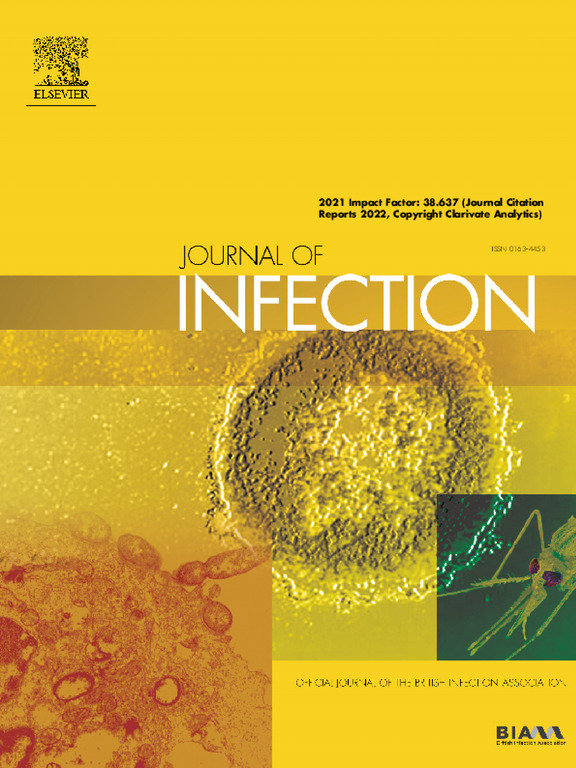Universal opt-out syphilis screening in a UK emergency department
IF 14.3
1区 医学
Q1 INFECTIOUS DISEASES
引用次数: 0
Abstract
Objectives
The incidence of syphilis in several areas of England has risen substantially. National programmes for blood-borne viruses (BBV) screening in emergency departments (ED) have been ongoing for several years however have not included syphilis. We hypothesised that screening for syphilis in an ED in a region of high prevalence might identify significant numbers of cases.
Methods
Universal opt-out syphilis screening was included with BBVs in a Northeast England ED, where a regional outbreak is ongoing. Those with reactive tests were invited to sexual health service (SHS) for further evaluation.
Results
Of 3312 ED attenders having blood drawn, 38 (1.2%) were confirmed T. pallidum EIA positive (45% RPR-positive). Compared to ED attenders testing negative, those with positive tests were younger and lived in more deprived areas, however had similar gender and ethnicity. 71% of those identified as needing assessment were seen in the SHS and 59% treated.
Conclusions
Universal screening for syphilis appears effective in identifying people with syphilis who traditionally don’t access SHS. This population has different demographics to people with syphilis attending SHS in England, being predominantly heterosexual and equal proportions of women. Routine ED screening for syphilis along with BBVs may be warranted in areas of high transmission.
英国急诊科普遍选择退出梅毒筛查。
目的:梅毒的发病率在英国的几个地区已经大幅上升。在急诊科(ED)进行血液传播病毒(BBV)筛查的国家规划已经进行了数年,但尚未包括梅毒。我们假设,在高流行率地区的急诊科进行梅毒筛查可能会发现大量病例。方法:普遍选择退出梅毒筛查纳入bbv在英格兰东北部急诊科,那里的区域疫情正在进行中。测试结果阴性者被邀请到性健康服务中心(SHS)进行进一步评估。结果:在3312名急诊人员抽血中,38人(1.2%)确诊梅毒螺旋体EIA阳性(45%为rpr阳性)。与检测呈阴性的ED患者相比,检测呈阳性的患者更年轻,生活在更贫困的地区,但性别和种族相似。被确定需要评估的人中有71%在SHS中看到,59%接受了治疗。结论:普遍的梅毒筛查对于识别传统上不使用SHS的梅毒患者似乎是有效的。这一人群与在英国参加性服务的梅毒患者有不同的人口统计学特征,以异性恋为主,女性比例相等。在高传播地区,常规ED筛查梅毒和bbv可能是有必要的。
本文章由计算机程序翻译,如有差异,请以英文原文为准。
求助全文
约1分钟内获得全文
求助全文
来源期刊

Journal of Infection
医学-传染病学
CiteScore
45.90
自引率
3.20%
发文量
475
审稿时长
16 days
期刊介绍:
The Journal of Infection publishes original papers on all aspects of infection - clinical, microbiological and epidemiological. The Journal seeks to bring together knowledge from all specialties involved in infection research and clinical practice, and present the best work in the ever-changing field of infection.
Each issue brings you Editorials that describe current or controversial topics of interest, high quality Reviews to keep you in touch with the latest developments in specific fields of interest, an Epidemiology section reporting studies in the hospital and the general community, and a lively correspondence section.
 求助内容:
求助内容: 应助结果提醒方式:
应助结果提醒方式:


